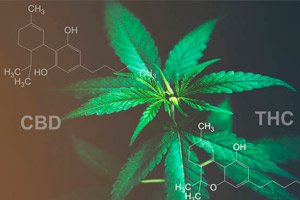
All iLive content is medically reviewed or fact checked to ensure as much factual accuracy as possible.
We have strict sourcing guidelines and only link to reputable media sites, academic research institutions and, whenever possible, medically peer reviewed studies. Note that the numbers in parentheses ([1], [2], etc.) are clickable links to these studies.
If you feel that any of our content is inaccurate, out-of-date, or otherwise questionable, please select it and press Ctrl + Enter.
Cannabis and psychosis: who is at risk and what do doctors now advise
Last reviewed: 18.08.2025
 ">
">The latest issue of the Canadian Medical Association Journal published a review, “Cannabis and psychosis” (August 11, 2025), which summarizes the accumulated data: regular and especially high-potency cannabis use is associated with an increased risk of psychotic disorders. The authors emphasize that the strength of products is growing, and adolescents and young adults, people with a personal or family predisposition to mental disorders, remain vulnerable.
Key findings in simple terms
- The higher the strength and the more frequent the use, the higher the risk. The greatest risks are associated with high-THC products (concentrates, dabs, extract vapes) and daily/almost daily use. This is supported by clinical data and studies of first episode psychosis.
- Age of onset matters. Starting to use in adolescence significantly increases the likelihood of psychotic episodes in later years.
- The rise in strength is a real trend. The increasing share of “strong” products on the market is one reason why doctors are seeing more severe cannabis-related episodes.
- Signals from the field: the health system is responding. In Canada, after the liberalization of laws, an increase in calls related to psychotic symptoms was noted - this is an important context for prevention and regulation.
What exactly is known about the cannabis → psychosis link?
- Dose-frequency-potency: There is a strong association between more frequent/high-potency use and risk of psychosis; high-potency marijuana is disproportionately common in patients with first-episode psychosis. This is not an "automatic cause," but the pattern is consistent across studies.
- Vulnerable groups: adolescents, young adults, people with a personal/family history of mental disorders, as well as those who have already experienced an episode of psychosis due to drug use - are at increased risk of relapse if use continues.
- Neurobiological clues: New evidence points to the involvement of the dopamine system (dopamine imbalance is a classic mechanism of psychosis), making the link biologically plausible.
What is advised to practitioners and users themselves
The authors of the review focus not only on risks, but also on prevention/harm reduction:
- Avoid high potency products (very high THC concentrates), do not increase frequency to daily.
- Delay the start of use as late as possible (preferably after the completion of active brain maturation).
- Screening of vulnerable groups: in primary care - ask about frequency/potency, family history of mental illness; in case of alarming symptoms - low threshold for referral to a psychiatrist/early intervention service.
- If symptoms appear (paranoia, hallucinations, severe disorganization of thought), stop using immediately and seek medical help; continued use increases the risk of recurrence.
Why this matters for policy and public health
As products become more accessible and potent, the cost of error for vulnerable users increases. The health system needs: educational campaigns on the risks of high-potency THC, clear strength labeling, restrictions on marketing to youth, and access to early intervention services for psychosis. Experience in Canada shows that usage trends are reflected in hospital and emergency department burden.
What remains unclear
The review emphasizes that most of the data are observational: they show an association but not “hard causation” for each individual. There are open questions about the role of confounding factors (genetics, stressors, other substances) and how specific cannabinoid profiles (eg, THC/CBD ratio) alter risk. Prospective studies with better exposure measurements and long-term follow-up are needed.
